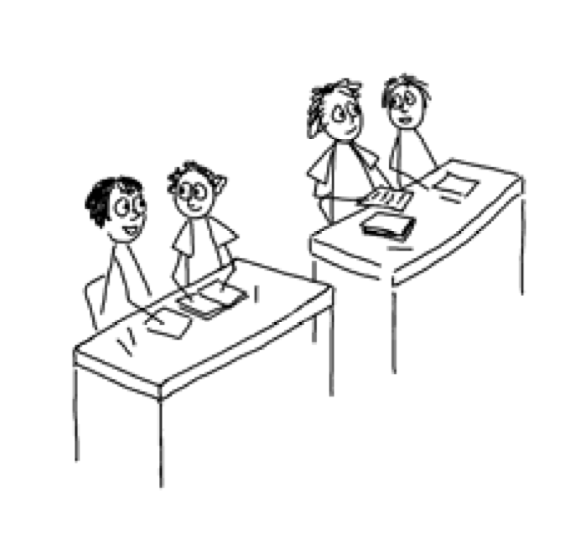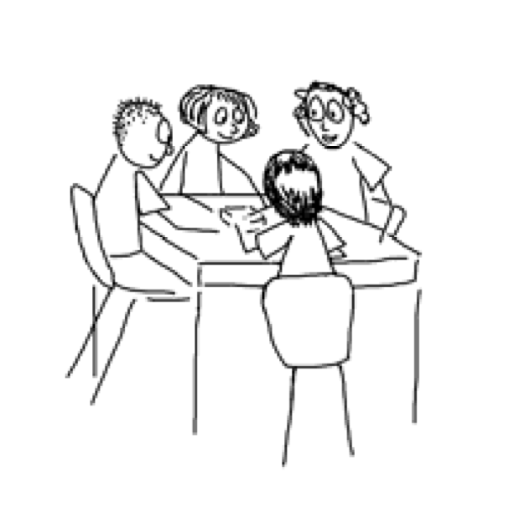True or false discussion activity model
As the name suggests, this type of True or False Discussion activity model is meant primarily for use with small groups of students to stimulate thinking and discussion. Students are asked to read a collection of statements and together consider whether they think it is likely to be:
- always true
- sometimes true
- always false.
For statements that they consider are ‘sometimes true’ they are asked to decide when they are true and when not, and be prepared to explain this to the rest of the class. For statements they consider always false they are asked to create an alternative statement that will always be true and read this to the class.
 |
An introductory activity
|
Uses of true or false discussion activities
True and false discussion activities can be used:
- To clarify definitions and meanings and probe common misconceptions
- To revisit existing knowledge whist probing further some of its complexities
- As a way of engaging students in the beginning of a new topic
- As an introductory activity to commence a teaching session
- To provide breaks from teacher talk in a teaching session
- As an opportunity to find out what students already know about a topic.
Benefits of true and false discussion activities
They boost student confidence because they acknowledge their existing knowledge prior to presenting more challenging statements.
They encourage students to verbalise their thinking as they present their arguments to each other and to the class as a whole
They provide students with an opportunity to think about a topic prior to the teachers’ input. Once students have thought about their own understanding of an idea they are more likely to be receptive to teacher input.
They provide opportunities to probe more deeply into ambiguities and finer points of meaning than could be done with individuals working alone.
They encourage students to share their different understandings of the topic. Establishing a cooperative approach through structured activities like this tends to have flow on benefits as students will then help each other in other aspects of their theory and practical work.
They allow the teacher to observe student learning/understanding. By listening to a group discussion they can pick up on students’ areas of strength and gain feedback about any misunderstandings.
Creating a true or false discussion activity
The set of statements can be anything from two to ten, depending on the time available for debriefing and the purpose for which you are using the activity (for example, revision vs. introduction of a new aspect of the topic).
It is most effective to have one or two easy statements to begin the exercise in order to boost students’ confidence prior to more challenging questions.
It is useful to create one or more statements around aspects of a topic that students of the past have commonly misunderstood, or perhaps ignored. By introducing the common mistake in a group exercise it is removed from being an individual error and hopefully prevent students making the same mistake in the future. It can also capture students’ attention more as they will have a vested interest in the ‘correct’ response after the small group or pair discussion.
Framing statements around ambiguous areas of the subject matter can promote debate and discussion which aid deeper learning.
 |
Set of statements not questions
Use topic that students have misunderstood in the past
Promotes debate & discussion
|
Remember that each item should be written as a statement, rather than in questions format.
Example
PD about the Australian VET system – revision discussion for visiting overseas teachers:
- TAFE Institutes are major providers of vocational training
- TAFE Institutes are totally funded by the government
- Most TAFE students in Australia are full-time students
- Training packages are national curriculum documents
- Training packages tell teacher how to teach
Sample true or false discussion activities for professional development sessions
Metric Estimation*
Instructions:
- Discuss your responses in groups of four. Make sure every person in the group understands your response and can explain it if they are asked to.
- Decide whether the following statements are more likely to be:
- Always true
- Sometimes true
- False
- If a statement is false – write a replacement statement that you think is true.
1. A half a litre of milk is the same as 500 ml of milk
2. A household bucket holds about 2 litres of water
3. Swimming 1000 metres is harder than swimming 1 kilometre
4. Water freezes at 0 degrees Centigrade
5. 400 grams of flour is the same as 1⁄4kg
6. A 2kg chicken is a good size to cook for dinner
7. Apotforcookingsoupholdsabout8litres
8. You should call the doctor if your baby’s temperature is 39.5 degrees Celcius
* Based on an activity in Marr, B & Helme S. (1991) Breaking the Maths Barrier: A Kit for Building Staff Development Skills in Adult Numeracy. Canberra: DEET.
Section 1: Awareness of LLN in VET
Sample true or false discussion activities for professional development sessions
Area and Volume
Instructions:
-
Discuss your responses in groups of four. Make sure every person in the group understands your response and can explain it if they are asked to.
-
Decide whether the following statements are more likely to be:
-
Always true
-
Sometimes true
-
False
-
-
If a statement is false – write a replacement statement that you think is true.
-
The capacity of a kitchen cup is approximately a quarter of a litre.
-
To buy paint for his lounge room Stephen should calculate its volume
-
The formula Volume = length x width x height can be used to find the volume of any three dimensional (3D) shape
-
One litre(1L) of water weighs exactly one kilogram(1kg).
-
A cubic centimetre is the same size as a square centimetre
-
The length around the outside of any flat shape is called its circumference
-
John carried a cubic metre of soil in his wheelbarrow.
